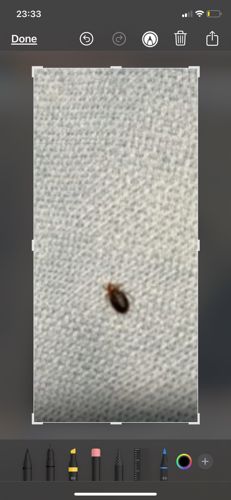Bed Bug
Scientific Name: Cimex lectularius
Order & Family: Hemiptera, Cimicidae
Size: Adults are typically 4-5 mm (0.16-0.20 inches) long, similar in size to an apple seed. Nymphs are smaller.

Natural Habitat
Primarily human dwellings, especially beds, mattresses, bed frames, and cracks/crevices in furniture and walls. They are nocturnal and hide during the day.
Diet & Feeding
Strictly hematophagous, meaning they feed exclusively on the blood of warm-blooded animals, primarily humans. They extend a proboscis to pierce the skin and draw blood.
Behavior Patterns
Nocturnal feeders, emerging from hiding spots to bite sleeping hosts. They are attracted by carbon dioxide and body heat. Bed bugs can survive for several months without a blood meal. Females lay eggs in secluded spots, and nymphs go through five instars (growth stages) before becoming adults, requiring a blood meal at each stage.
Risks & Benefits
Potential risks include itchy bites, allergic reactions (ranging from mild to severe welts), secondary skin infections from scratching, and psychological distress (anxiety, insomnia). While not known to transmit diseases, their presence can be highly irritating and difficult to eradicate. There are no known benefits of bed bugs to humans or the ecosystem.
Identified on: 9/10/2025